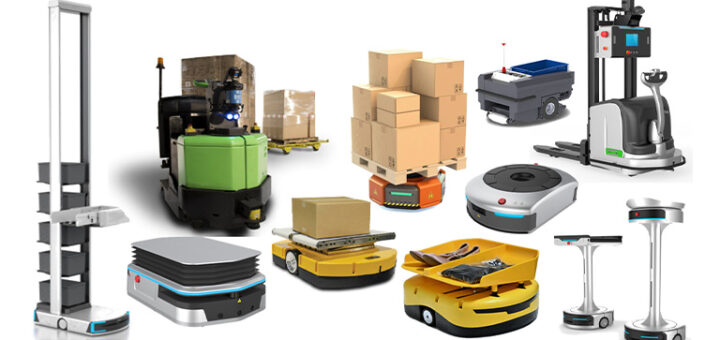Is your Warehouse Layout Up to Date? Receive an Updated Layout in 2 Weeks.
Understanding the Role of AMRs in Automated Facilities

By Patricia Laureys
March 7th | 4 min read
AMRs, or Autonomous Mobile Robots, are increasingly used to automate logistics processes in warehouses and manufacturing facilities. Their significance cannot be overlooked, and as the technology continues to advance and overcome certain obstacles, their adoption will undoubtedly grow.
The growth of AMR applications for warehouse transport, storage and piece-picking has skyrocketed in recent years, largely driven by the surge in e-commerce, labour challenges and need for rapid deployment. AMRs offer many advantages over more disruptive, fixed installations such as shuttle systems, cubic storage systems, sortation systems and conveyance. Fixed solutions typically require a higher up-front investment and longer, more disruptive, installations.

Image Credits: Conveyco
AMRs Offer Significant Value Over More Traditional Solutions, if They’re the Right Fit
AMRs have demonstrated their value in non-disruptive applications, with rapid deployment that minimally impacts on-going operations. Notably in internal transport, they have gradually replaced previous Automated Guided Vehicle (AGV) and Industrial Guided Vehicle (IGV) solutions as these newer AMRs are becoming increasingly intelligent enabling greater interaction with humans and other equipment.
For tasks such as put away and full pallet picking, AMR applications utilizing reach truck equipment offer an automated alternative to human operated reach trucks. Nevertheless, challenges persist. As you reach greater heights within the warehouse, a flatter floor becomes essential. Understanding pallet quality, overhang, and limiting rack beam deflections are crucial factors, while ensuring proper aisle widths is essential for safety and turning radius specifications.
As AMRs have become smarter, their interactions with humans have increased. AMRs that assist operators during picking tasks provide great opportunity for operational improvement. When a robot follows a picker, or delivers the product to a picker, it can positively impact ergonomics, accuracy, and productivity. In a good-to-person, zone picking set-up, AMRs eliminate the dead-travel to and from order initiation and completion points, densifying picks and enabling pickers to spend more time picking.
However, AMR applications still face challenges, for example in unloading and loading trucks. The quality of the trailer floor and pallets, and the lack of flexibility in existing solutions present hurdles. Additionally, shipping areas experience the highest traffic and are prone to human-equipment interference.
Are AMRs Right for Your Operation?
As the use of AMRs becomes increasingly prevalent in businesses, it may be the perfect time for your company to explore the benefits of integrating these automated mobile processes.
However, although AMRs represent an advancement in automation technology, they are not without their challenges, and it is important understand the technology behind AMRs to effectively navigate through the various solutions and brands available on the market. The decision on whether to opt for AMRs or other types of automation depends on your business’s specific requirements.
To make an informed decision, rely on a trusted automation advisor. At LIDD, we specialize in providing tailored solutions and expertise in AMR technology. Our team of skilled professionals can help you analyze your operation and determine where the added value of AMRs lies for your business.
Looking for guidance on AMRs and logistics automation? Get in touch with us below.
Connect with an expert or reach out to [email protected].
